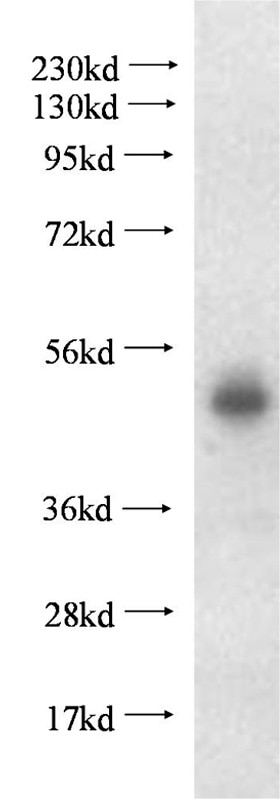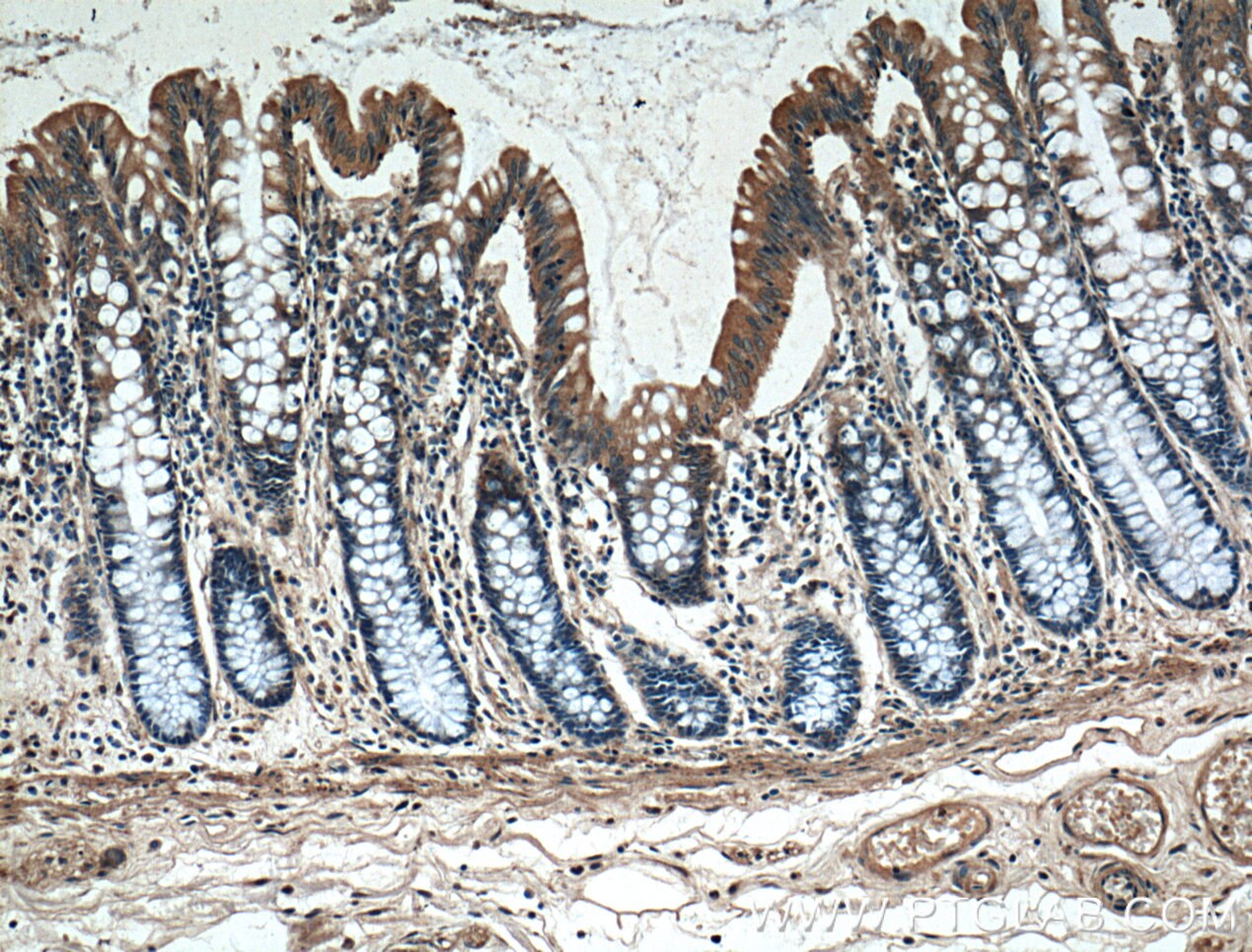Anticorps Polyclonal de lapin anti-PLEKHA1
PLEKHA1 Polyclonal Antibody for WB, IF, IHC, ELISA
Hôte / Isotype
Lapin / IgG
Réactivité testée
Humain et plus (1)
Applications
WB, IHC, IF/ICC, ELISA
Conjugaison
Non conjugué
N° de cat : 10238-1-AP
Synonymes
Galerie de données de validation
Applications testées
| Résultats positifs en WB | tissu placentaire humain, cellules Jurkat |
| Résultats positifs en IHC | tissu de côlon humain, tissu de cancer du pancréas humain il est suggéré de démasquer l'antigène avec un tampon de TE buffer pH 9.0; (*) À défaut, 'le démasquage de l'antigène peut être 'effectué avec un tampon citrate pH 6,0. |
| Résultats positifs en IF/ICC | cellules HeLa, |
Dilution recommandée
| Application | Dilution |
|---|---|
| Western Blot (WB) | WB : 1:500-1:1000 |
| Immunohistochimie (IHC) | IHC : 1:50-1:500 |
| Immunofluorescence (IF)/ICC | IF/ICC : 1:50-1:500 |
| It is recommended that this reagent should be titrated in each testing system to obtain optimal results. | |
| Sample-dependent, check data in validation data gallery | |
Applications publiées
| WB | See 1 publications below |
Informations sur le produit
10238-1-AP cible PLEKHA1 dans les applications de WB, IHC, IF/ICC, ELISA et montre une réactivité avec des échantillons Humain
| Réactivité | Humain |
| Réactivité citée | souris |
| Hôte / Isotype | Lapin / IgG |
| Clonalité | Polyclonal |
| Type | Anticorps |
| Immunogène | PLEKHA1 Protéine recombinante Ag0318 |
| Nom complet | pleckstrin homology domain containing, family A (phosphoinositide binding specific) member 1 |
| Masse moléculaire calculée | 46 kDa |
| Poids moléculaire observé | 46 kDa |
| Numéro d’acquisition GenBank | BC001136 |
| Symbole du gène | PLEKHA1 |
| Identification du gène (NCBI) | 59338 |
| Conjugaison | Non conjugué |
| Forme | Liquide |
| Méthode de purification | Purification par affinité contre l'antigène |
| Tampon de stockage | PBS avec azoture de sodium à 0,02 % et glycérol à 50 % pH 7,3 |
| Conditions de stockage | Stocker à -20°C. Stable pendant un an après l'expédition. L'aliquotage n'est pas nécessaire pour le stockage à -20oC Les 20ul contiennent 0,1% de BSA. |
Informations générales
Pleckstrin homology (PH) domain is commonly found in eukaryotic signaling proteins and possesses multiple functions including the abilities to bind inositol phosphates and various proteins. The tandem PH domain containing protein-1 (TAPP1) or PH domain containing-family A (phosphoinositide binding specific) member 1 (PLEKHA1), interacts strongly and specifically with phosphatidylinositol 3,4-trisphosphate [PtdIns(3,4)P(2)], which is one of the immediate breakdown products of PtdIns(3,4,5) P (3) and functions as a signalling molecule in insulin- and growth-factor-stimulated pathways. TAPP1 is also associated with the protein- tyrosine-phosphatase-like protein-1 (PTPL1 also known as FAP-1) and maintains PTPL1 in cytoplasm. By binding to PtdIns(3,4) P (2) and PTPL1, TAPP1 may regulate the membrane localization of PTPL1."
Protocole
| Product Specific Protocols | |
|---|---|
| WB protocol for PLEKHA1 antibody 10238-1-AP | Download protocol |
| IHC protocol for PLEKHA1 antibody 10238-1-AP | Download protocol |
| IF protocol for PLEKHA1 antibody 10238-1-AP | Download protocol |
| Standard Protocols | |
|---|---|
| Click here to view our Standard Protocols |
Publications
| Species | Application | Title |
|---|---|---|
J Exp Med Secretogranin III as a disease-associated ligand for antiangiogenic therapy of diabetic retinopathy. | ||
Exp Eye Res Function-first ligandomics for ocular vascular research and drug target discovery. |







